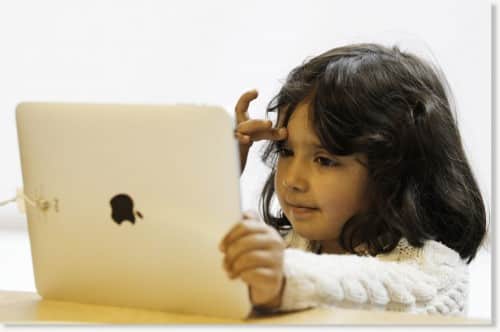Steve Jobs’ Innovation Will Continue To Impact Children’s Education


We were not an exclusively Apple household as my father made a point to teach his little girl DOS commands on PCs and had me activity learning both operating systems from a young age. I very vividly remember the first Apple computer I ever saw — a 1980s relic with a tiny screen in a gray box. I have many memories from being five years old, but one of my strongest is of sitting at the screen playing The Manhole — my first ever computer game.
My father was so enthused by computers that he always made a point to explain to me the great minds behind these gadgets. As much as I knew that Bill Gates was the smart man behind our PCs, I also knew that Steve Jobs had invented our Apple computer. I remember his face from the covers of magazines all around our house, smiling from the pages of TIME and Newsweek. He was round in the face then and had brown floppy hair. His signature smirk and narrow nose reminded me much of Willy Wonka from the original Willy Wonka & the Chocolate Factory — another phenomenon I was introduced to around the same time.
It made sense to me that perhaps this man who crafted all these “magic machines” as my grandfather called them might live a Willy Wonka-esque existence. Inventing toys and imagining machines that no one had ever envisioned before.
As I got older, Jobs’ gadgets went on the mark other periods of my life including the iPod I procured in high school and the MacBook I later purchased with my own money. Such toys completely changed the way I thought about the digital categorization of music or the presentation of photographs or the streaming of video. And the older I got, the more I saw that Steve Jobs was far from finished, crafting new toys for grownups that once again changed perception and veered far from expectation. There always seemed to be something new.
And in the new generation of kids that I often see fiddling with their parents’ iPhones or learning to read via an iPad app, I see that Jobs’ innovation continues to captivate children. iPads have already been welcomed into education for their intuitive use as any child seems to have the touchscreen down in mere minutes. And for every story you come across that says smartphones and gadgets are destroying our children, there is a counter study that says iPads are helping children learn in new ways. Just today, I learned that iPads are helping children with severe visual impairments learn how to read. The tablet device was called a “life-changing therapy” tool by the University of Kansas, helping small children with brain damage develop language skills through bright lights and interactions with the screen.
As an early adopter of his technology, I’m saddened by Steve Jobs’ death. But I see that there are many new early adopters that are coming after me — many of which will thrive and learn thanks in large part to his vision and innate ability to see the world differently.
(photo: theapplebites.com)



